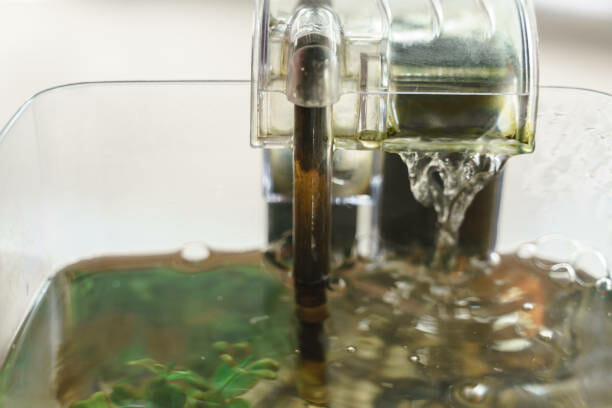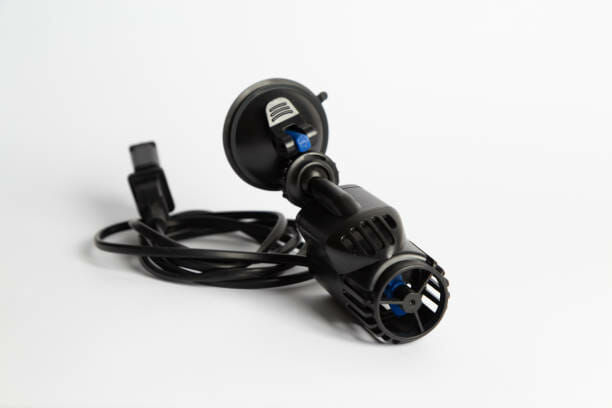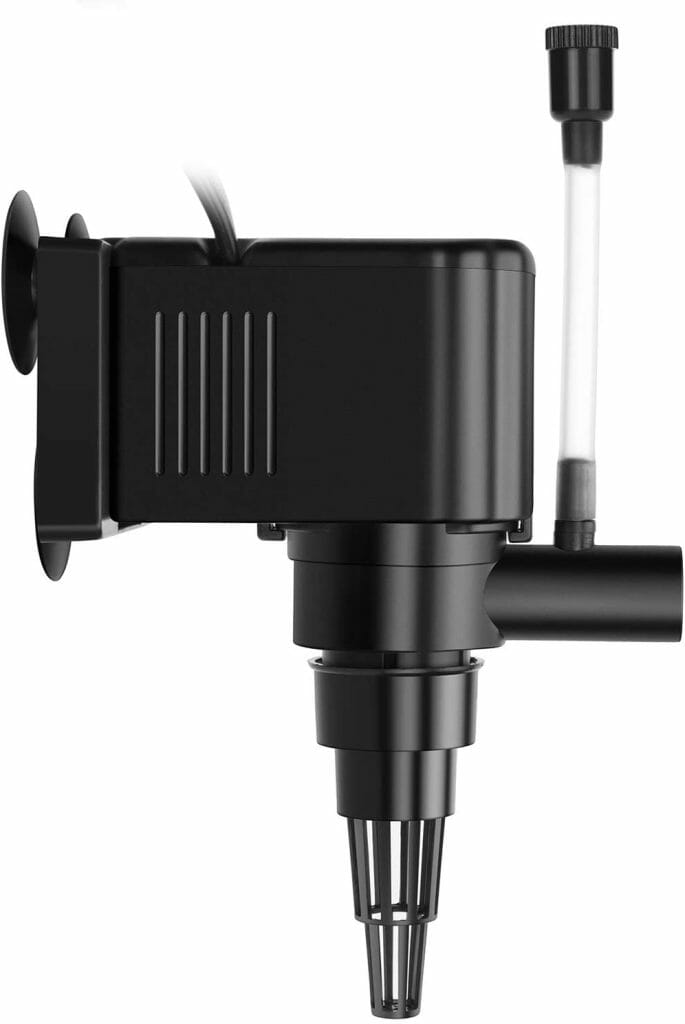Aquarium Circulation Pump vs. Powerhead: Features, Pros & Cons
Aquarium circulation pumps and powerheads are two different types of aquarium equipment that can be used to create water movement in your tank. Circulation pumps work by moving water through a series of tubes, while powerheads use a propeller to create a powerful flow of water.
The main difference between the two is that powerheads are more efficient at creating a powerful flow of water, which can be useful if you have a large tank or want to create more turbulence in the water. However, circulation pumps can be more affordable and are often easier to install.
Table of Contents
Definition and Features
Aquarium circulation pumps are used to circulate water and nutrients in an aquarium. They are also used to remove waste products from an aquarium. The main features of an aquarium circulation pump are the impeller and the hoses. The impeller is a spinning disk that creates a powerful flow of water through the hoses. The size and shape of the impeller can affect how quickly water moves through the pump, and these factors play a role in deciding which type of circulation pump to use.
A powerhead pump is another great option for aquarium circulation. It creates a powerful current that helps move water and fish around the tank. Powerheads can be mounted on the side or top of your tank, and they usually have a variety of adjustments to customize their output. The main difference between powerheads and circulation pumps is that powerheads are designed to create more turbulence in the water. This turbulent flow helps distribute oxygen and food throughout the tank more effectively. Additionally, powerheads have adjustable RPMs that allow you to control how much circulation your water receives.

Similarities and Differences
Similarities
- Purpose: Both aquarium circulation pumps and powerheads are used to circulate water and oxygen in an aquarium. They work by moving water through a series of tubes and impellers.
- Blade Structure: Powerheads have more blades, which create more noise and turbulence, while circulation pumps have fewer blades that move the water more slowly.
- Varying Sizes: Moreover, aquarium circulation pumps and powerheads come in different sizes and shapes to suit different aquariums. A powerhead is a good choice for large, heavily stocked tanks, while a circulation pump is better suited for smaller tanks with less fish.
Differences
- Function: Circulation pumps create a current of water by moving it through a series of impellers, while powerheads use a propeller to create a powerful current of water.
- Efficiency: Powerheads are more efficient than circulation pumps when it comes to moving water, but they also require more power to operate. Circulation pumps are less efficient, but they are easier to operate and can be used with smaller aquariums.
- Placement: A powerhead is submerged and a circulation pump is out of the water, a powerhead’s motor is larger and runs at a higher RPM than that of a circulation pump.
- Maintenance: This is the more popular type of aquarium circulator but it does not require any adjustments or maintenance, except for regular filter cleaning procedures where saltwater filtration systems are concerned because they have an ongoing electrical cost to operate being that use motors that need some energy to circulate the water. A circulatory pump on the other hand uses a small motor to run at low RPMs, it doesn’t produce as much noise or turbulence when in use but can be difficult to adjust because of its location under the aquarium glass so that air bubbles don’t enter making an unstable platform for beneficial bacteria which are essential for achieving good results, thus requiring more frequent adjustments than those of powerheads.
- Cost of Value: Both aquarium circulation pumps and powerheads have different prices. The price of a powerhead will depend on the features it has, while the price of an aquarium circulation pump will depend on the brand.

Pros & Cons of Using Aquarium Circulation Pump
Pros
Aquarium circulation pumps are beneficial for several reasons. They help to circulate water and nutrients throughout the aquarium, which can improve the health and appearance of the fish. Additionally, they can help to remove waste and debris from the aquarium, which can reduce the risk of disease.
Circulate Water to Keep the Aquarium Clean
Aquariums rely on a circulating pump to circulate water and keep the aquarium clean. A powerhead does the same thing, but it is more powerful and can be used to increase the water flow in an aquarium. A circulatory pump is less powerful and is designed to move smaller volumes of water.
Keep Fish Healthy and Happy
Aquarium circulation pumps help to keep fish healthy and happy by circulating water through the aquarium. This helps to keep the fish’s environment clean and free from harmful bacteria and algae.
Reduce the Amount of Noise in the Aquarium
Aquariums are often kept in relatively small spaces, which can lead to increased levels of noise. Circulatory pumps are a great way to reduce the amount of noise in an aquarium, as they help to circulate water and create a more even flow.
Cons
When it comes to keeping your tank healthy and thriving, using the right equipment is essential. However, there are times when using a circulation pump may not be the best solution. Circulation pumps work by moving water through your tank and help to keep your fish healthy and thriving.
Consumes More Energy
However, they can also be a bit of a hassle if your tank isn’t large enough to accommodate one. If your tank is small, a powerhead may be a better solution because it uses less energy. It’s important to consider the size of your tank and what type of equipment will work best for it.
More Expensive
Another downside to circulation pumps is that they can be expensive to purchase and maintain. Additionally, if your tank doesn’t have a strong current, the pump may struggle to circulate water effectively. If these factors are important to you, it might be better not to use a circulation pump in your tank at all.

Pros & Cons of Using Powerhead
Pros
Powerheads provide an efficient way to power your lighting and other aquarium equipment. They help to move water and dissolved oxygen around the aquarium, which helps to keep the fish healthy and happy. Additionally, they can help to remove waste and debris from the aquarium, which can help to improve the overall aesthetics of your tank.
Provide a Continuous Flow of Water
This is especially beneficial for fish who require a lot of water movement. For example, an African Cichlid kept in a small aquarium with stagnant water will often become infected by various types of algae. This can be prevented simply by adding circulation pumps to the tank and establishing them as part of your routine.
User-Friendly and Can Be Mounted on Any Surface
Powerhead pumps are very easy to use. They can be mounted on any surface in your aquarium, allowing you to set up the water flow in a variety of ways. The style of circulation pumps has come in many different varieties over the years. They range from practically unseen units that blend into an aquarium background, to more eye-catching devices with exterior designs and internal lighting capabilities.
Affordable and Easy to Maintain
Aquarium circulation pumps are a great way to keep your tank healthy and thriving, but they can be expensive to buy and maintain. Powerheads, on the other hand, are a great way to cheaply and easily increase the flow of water in your tank, but they can be less effective at circulating water and can be less affordable to maintain.
Cons
The answer to this question depends on a few factors, including the size and type of aquarium, the type of fish you have, and the amount of flow your tank needs. If the aquarium is smaller or if there are no fish native to your area, you may only need a standard powerhead.
On the other hand, if you have large aquariums that need to be filtered, odds are better than not, your powerhead will provide more beneficial results. Powerheads benefit most when they’re floating in an established tank or used as supplemental device infiltration systems due to their steady output of water movement and levels. These benefits make them ideal additions for active aquarists who already suffer from the challenge of keeping fish alive with the little-to-no flow in their tanks.